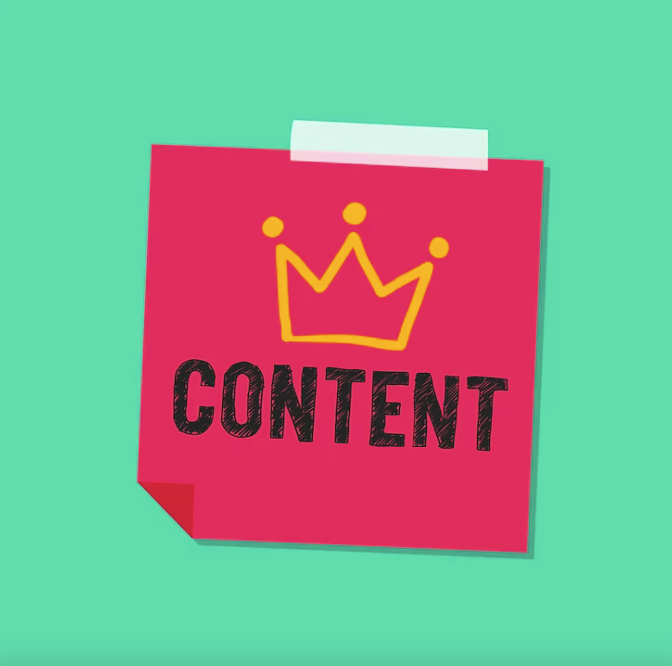Artful Content Marketing: Crafting Valuable Website Content

Using Content Marketing to Promote Your Website: Creating Unique and Valuable Content
Creating original and quality material is an essential component of content marketing, which plays an important part in advertising your website. information marketing entails creating and disseminating relevant, useful, and entertaining information in order to attract and maintain a target audience. You can create your brand as a trusted expert in the art style area and attract traffic to your website by continuously offering high-quality content that fulfils the requirements and interests of your audience. Unique and valuable content not only helps you stand out from the crowd, but it also boosts user interaction, raises exposure, and leads to increased conversions and company success.
Understanding the Power of Content Marketing for Website Promotion
Content marketing is an effective website promotion approach because it enables you to establish a strong online presence, attract a focused audience, and develop meaningful interactions with your users. You may give relevant information, highlight your expertise, and engage with your audience on a deeper level by creating well-crafted content, such as blog entries, articles, videos, infographics, or social media postings. material marketing also aids in the visibility of your website in search engines, since search algorithms prioritise high-quality and relevant material. You can build organic traffic, raise brand recognition, and establish your website as a go-to resource in the art style business by continuously offering relevant material.
How Content Marketing Drives Traffic, Engagement, and Conversions
By providing relevant information, amusement, or inspiration to your target audience, content marketing promotes traffic, engagement, and conversions. You may increase the number of visits to your website by developing and distributing content that is relevant to the interests and requirements of your target audience. Engaging and useful content keeps readers on your site longer, encouraging them to explore deeper and improving conversions. Furthermore, content marketing allows you to include smart calls to action inside your material, directing readers to do certain activities such as signing up for a newsletter, purchasing something, or sharing your content with others. You can develop trust, establish reputation, and eventually generate real conversions by regularly giving value through your content.
Key Benefits of Content Marketing for Art Style Websites
Content marketing has various advantages for art-related websites. For starters, it allows you to share your artistic vision, skills, and distinct style with a larger audience. You may attract art aficionados, collectors, or new clients to your website by generating aesthetically appealing and educational material, such as tutorials, behind-the-scenes movies, or artist interviews. Content marketing also aids in the establishment of your brand identity and differentiation in a competitive market. Furthermore, excellent material that educates or inspires your audience may result in higher social shares and backlinks, increasing the exposure and authority of your website in search engine rankings. Overall, content marketing may help art style websites increase brand visibility, encourage community participation, and drive business success.

Defining Your Content Marketing Strategy
To effectively use content marketing, you must first create a clear plan that corresponds with your goals and target audience. A well-defined content marketing plan specifies the types of material you want to develop, the channels you intend to use to disseminate it, and the objectives you hope to achieve. Identifying your target audience and knowing their wants, preferences, and pain points is a critical step in developing your approach. You may develop content that resonates with them and adds value by learning about their interests and motivations. Setting precise goals and objectives for your content marketing activities, such as boosting website traffic, generating leads, or growing brand recognition, allows you to track the performance of your plan and make data-driven choices.
Identifying Your Target Audience and Understanding Their Needs
It is critical to identify your target audience for effective content marketing. Take the time to investigate and analyse your target clients or users, taking into account elements such as demographics, hobbies, preferences, and potential obstacles. Understanding their wants and motivations enables you to produce content that addresses their individual problems and offers relevant answers. You may develop a stronger connection and increase engagement by personalising your material to their interests and ambitions. To obtain data and insights about your audience, use technologies such as customer surveys, social media analytics, and website analytics. Maintaining and upgrading your audience profiles on a regular basis ensures that your material remains relevant and connects with your target demographic.
Setting Goals and Objectives for Your Content Marketing Efforts
Setting specific goals and objectives is critical to the success of your content marketing activities. Your objectives should be SMART (specific, measurable, attainable, relevant, and time-bound). For example, your objective may be to double organic website traffic in six months or to produce a set number of leads each month through content downloads. Setting measurable targets allows you to measure your progress, assess the success of your content marketing plan, and make required changes along the way. Objectives should be consistent with your broader company goals, such as improving brand visibility, growing audience reach, or generating conversions. Defining goals and objectives gives your content development efforts direction and focus, and keeps you on track to achieve your targeted outcomes.

Crafting Compelling Art Style Content
Crafting appealing art style content entails capturing the essence of your artistic vision and emotionally connecting with your target audience. Begin with brainstorming ideas that are consistent with your brand and relevant to the interests of your target audience. Consider producing aesthetically appealing material such as breathtaking photography, movies of your creative process, or virtual tours of art shows. Tell interesting tales about the inspiration behind your artwork, or offer personal anecdotes to connect with your audience. In addition to displaying your own artwork, you may connect and inspire your audience by providing instructional information such as painting tutorials, recommendations, or historical insights. Always keep your target audience in mind while writing material that is real, educational, and aesthetically attractive.
Developing a Content Calendar and Editorial Plan
A content calendar and editorial plan are critical tools for properly organising and executing your content marketing strategy. A content calendar allows you to prepare and schedule your material ahead of time, assuring a steady flow of excellent information to your audience. Begin by noting important dates, events, or seasons related to your art style speciality. Identify themes or subjects that correspond to those dates and plan when each piece of material will be released. To keep your audience interested and adapt to their interests, consider varying your content types and channels. An editorial strategy specifies the specifics of each piece of content, such as titles, keywords, target audience, and promotion channels. This strategy assists you in maintaining a consistent brand voice, ensuring keyword optimisation.
Generating Ideas for Unique and Creative Art Style Content
Creating ideas for one-of-a-kind and creative art style material necessitates tapping into your artistic enthusiasm and researching numerous sources of inspiration. Begin by staying current on the newest art styles, methods, and subjects. To extend your viewpoint, interact with other artists, follow art communities, and attend exhibits or virtual events. Consider researching pertinent art history, creative trends, or cultural influences to your work style. Collaborate with other artists or invite guest authors to your website to add new viewpoints and unique information. Pay attention to your audience’s opinions, queries, and interests as well in order to personalise your material to their individual needs. You may develop appealing art style content that captivates and interests your audience by constantly seeking inspiration and exploring new concepts.